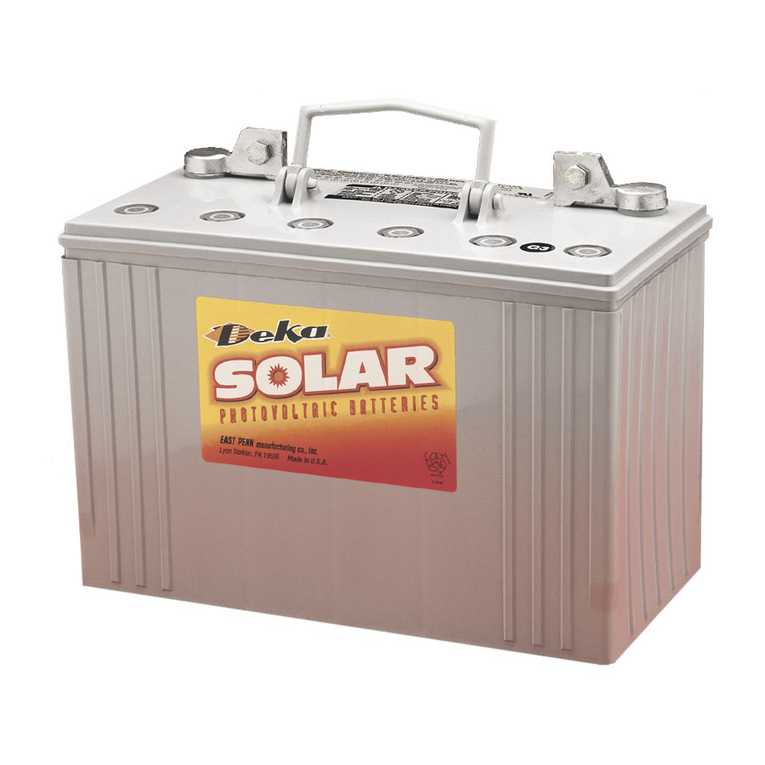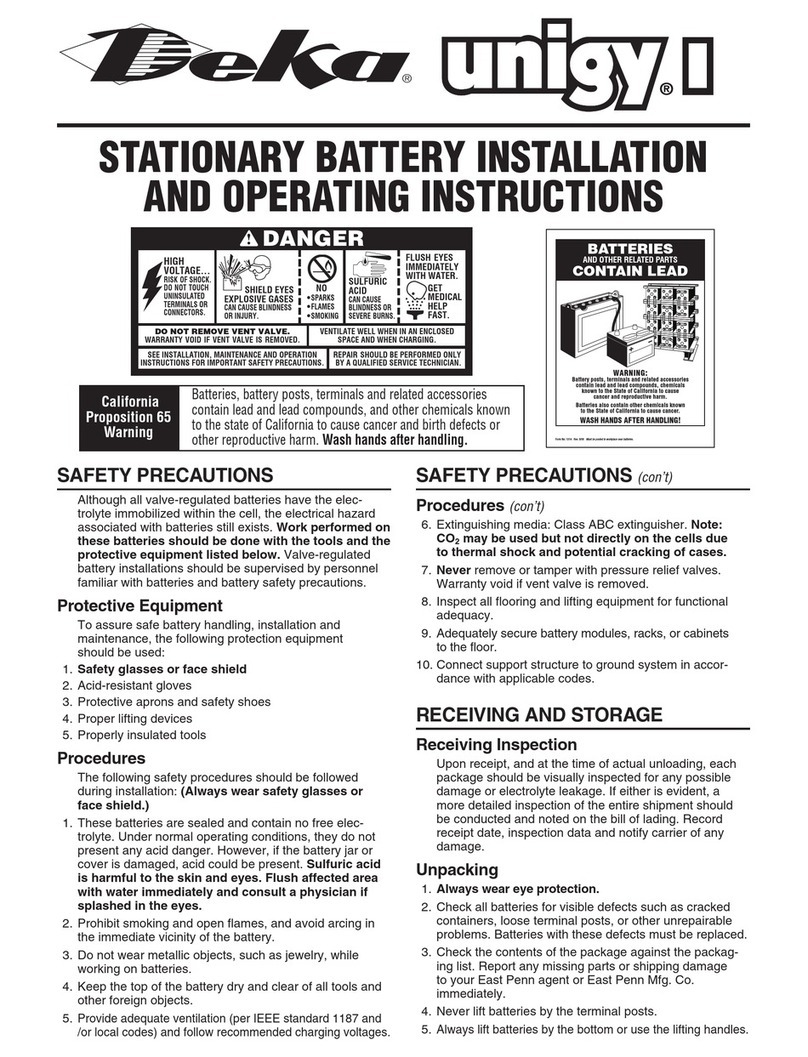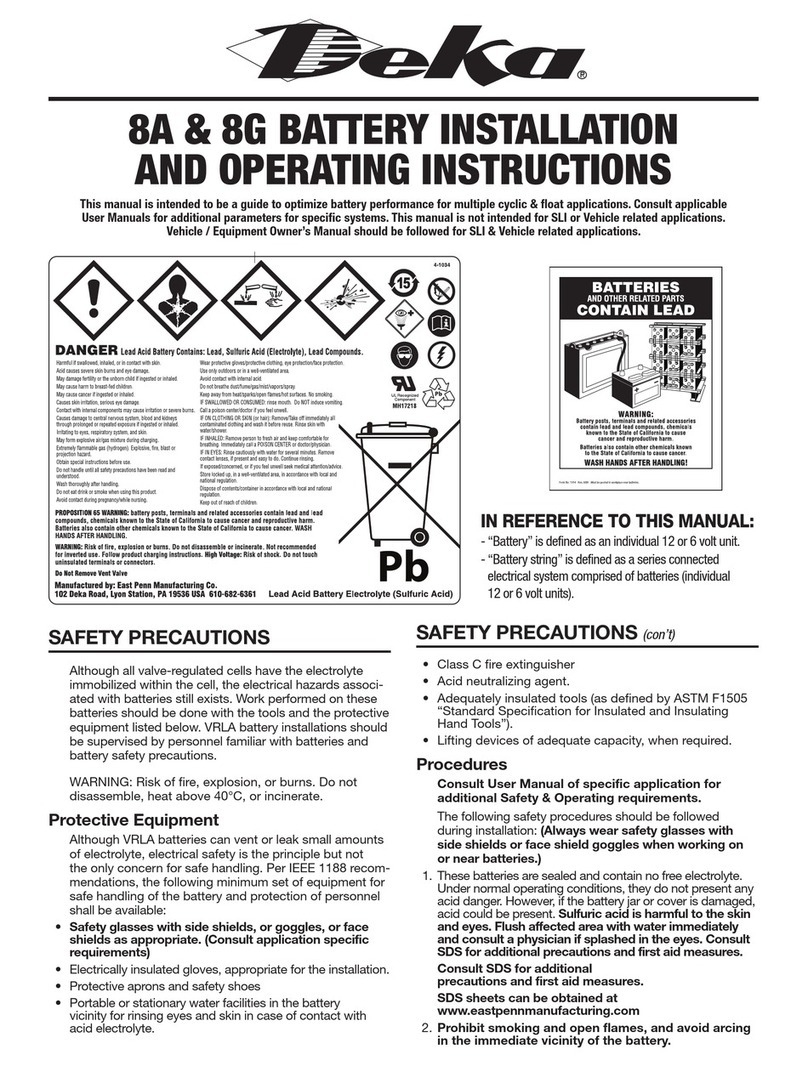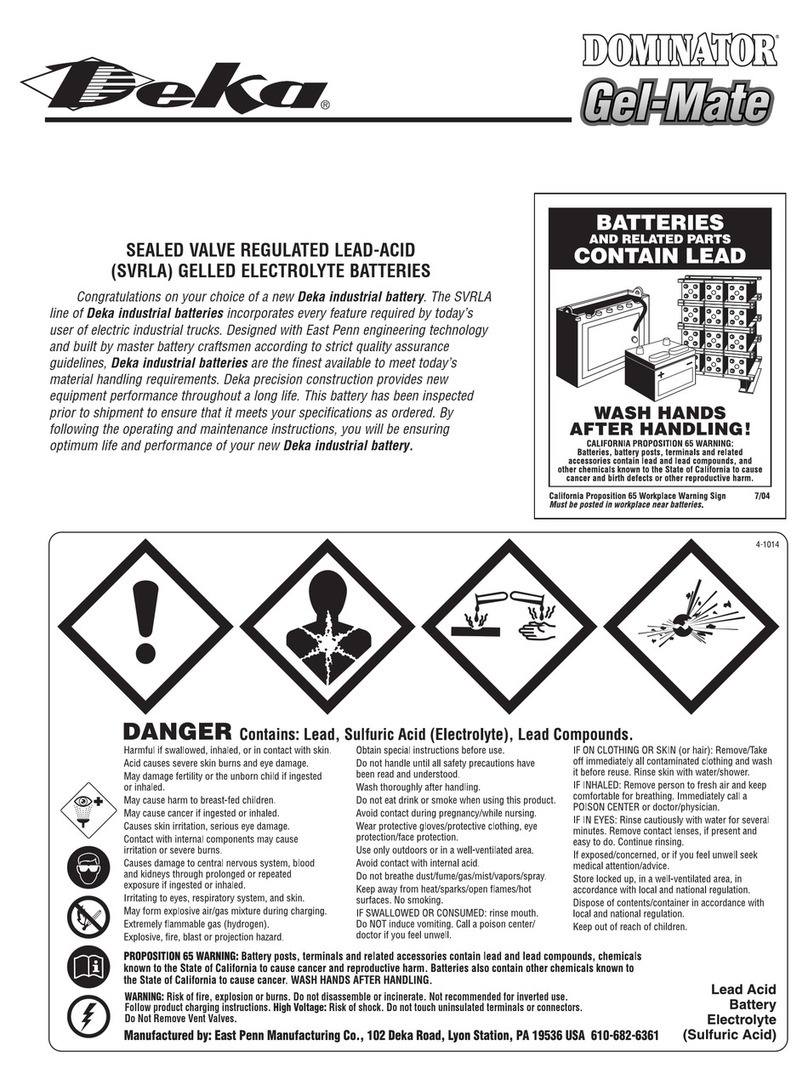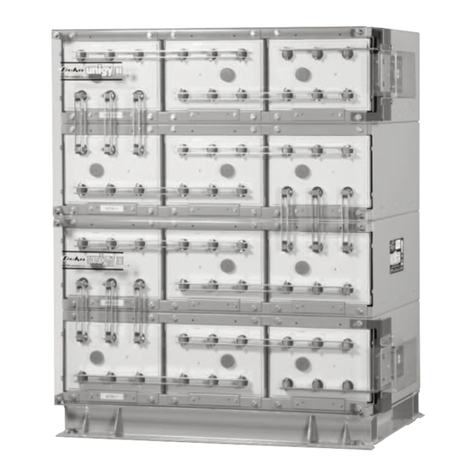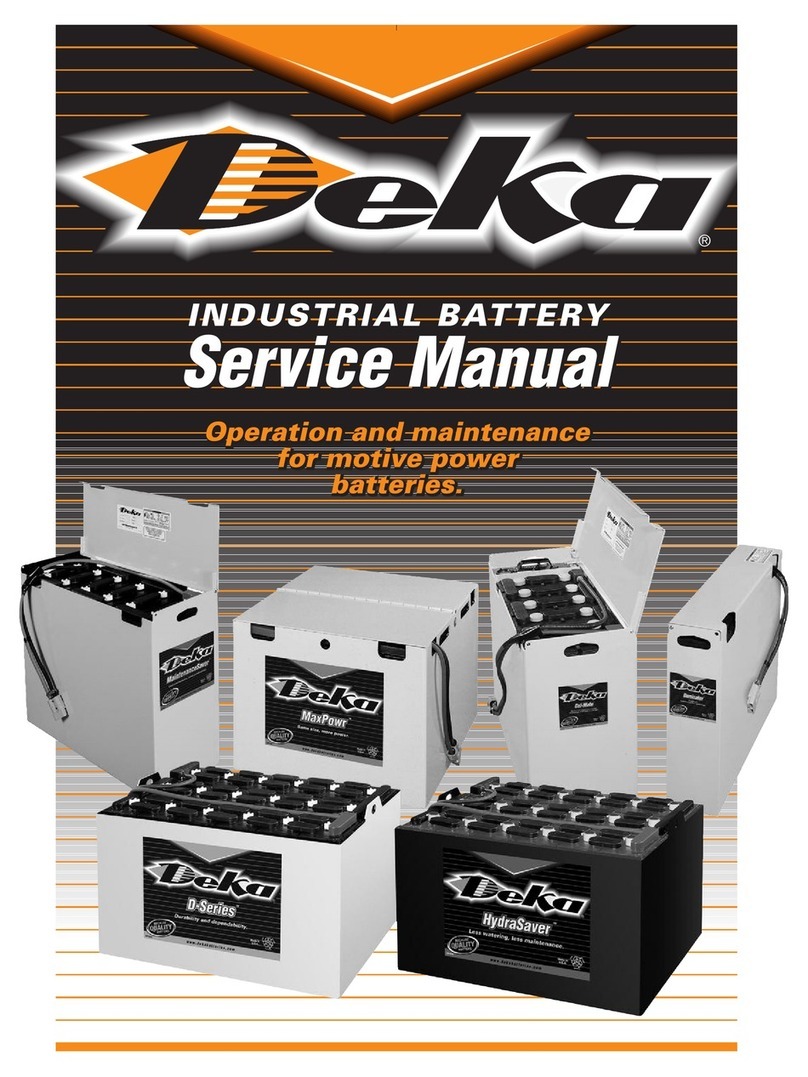
5
Battery Operation (Continued)
The battery string operating temperature should not exceed
95° (35°C) and should never exceed 105° (40.5°C) for more
than an eight-hour period. f operating temperatures are
expected to be in excess of 95°F (35°C), contact East Penn
for recommendations.
Discharging at temperatures less than 77° (25°C) will reduce
the capacity of the battery. f operating temperatures are
expected to be less than 50°F (10°C), contact East Penn for
recommendations.
The battery string must be located in a manner that the individ-
ual batteries do not vary by more than 5° (2.8°C) between the
lowest and highest individual battery temperatures.
Rectifier Ripple Voltage
FREQUENCY
Ripple that has a frequency greater than 667Hz (duration
less than 1.5ms) is acceptable, unless it is causing addi-
tional battery heating.
Ripple that has a frequency less than 667Hz (duration
greater than1.5ms), must meet the following voltage
specification to be acceptable.
VOLTAGE SPEC F CAT ON
Ripple voltage shall be less than 0.5% peak to peak of
the manufacturer’s recommended battery string voltage.
ailure to comply can void the warranty.
RECORD KEEP NG
Voltages, Temperatures & Ohmic
READ NGS
Record keeping is an important part of stationary battery main-
tenance and warranty coverage. This information will help in
establishing a life history of the battery string and inform the
user if and when corrective action needs to be taken. Consult
Battery Maintenance Report (Pg.8 – Appendix C).
While it is acceptable to operate at temperatures less than
77° (25°C), it will require longer charging time to become
fully recharged. Also, the capacity will be less at operating
temperatures below 77° (25°C).
After installation and when the battery string has been on float
charge for one week, the following data should be recorded:
1. Battery string voltage at battery terminals while battery is
on float charge.
2. Charger voltage at charger panel meter.
3. Individual battery float voltages.
4. Ambient temperatures within area of battery string.
5.
Terminal connections should be checked to verify that the
installer did torque all connections properly; consult
Torque/Retorque Values (Pg. 4 – Table 1) for proper torque
values. Micro-ohm readings should be taken across every con-
nection. Refer to meter manufacturer’s instructions for proper
placement of probes. If any reading differs by more than 20%
from its initial installation value, re-torque the connection, con-
sult Torque/Retorque Values (Pg. 4 – Table 1) for proper
torque values. f reading remains high, clean contact sur-
faces according to Step 2 under Battery Assembly.
Failure to maintain proper records including information as
detailed above may result in voiding any applicable warranty.
MA NTENANCE
Always wear eye protection when working on or near bat-
teries. Keep sparks and open flames away from batteries
at all times. Review Safety Precautions (Pg. 1)
Annual nspection (1)
1. Conduct a visual inspection of each battery.
2. Record the battery string voltage at battery terminals
while battery is on float charge.
3. Record the charger voltage at charger panel meter.
4. Record the individual battery voltages. The accuracy of
the DMM (Digital Multimeter) must be 0.05% (on dc
scale) or better. The DMM must be calibrated to NIST
traceable standards. Because float readings are affected
by discharge and recharges, these readings must be
taken when battery string has been on continuous,
uninterrupted float for at least one month. Battery should
be within ± 0.30 volts of the average battery string float
voltage.
5. Record the ambient temperatures.
6. Record the battery string temperature at the negative
terminal.
7. Record individual battery Ohmic readings.
8. Record all interbattery and terminal connection resis-
tances. Micro-ohm readings should be taken during this
inspection. If any reading differs by more than 20% from
initial readings taken, retorque the connection. Retorque
value is equal to initial torque value as indicated in
BATTERY ASSEMBLY section. Recheck the micro-ohm
reading. If the reading remains high, clean the contact
surface according to installation portion of this manual.
(1) Other Maintenance nspection intervals follow EEE 1188
Battery Cleaning
Batteries, cabinets, and racks, should be cleaned with
clear water, a mixture of baking soda and water or East
Penn Mfg supplied battery cleaner (part # 00321).
Never use solvents to clean the battery.
Capacity Testing
Per IEEE 1188 “Capacity testing is used to trend battery
aging. The result of a capacity test is a calculation of the
capacity of the battery. The calculated capacity is also
used to determine if the battery requires replacement.”
When performing capacity testing and recording data
refer to IEEE 1188 recommendations.
NOTE: When discharging at higher rates, extra
connectors may need to be added to prevent exces-
sive voltage drop and/or excessive temperature rise.
Should it be determined that any individual battery (ies)
need to be replaced, contact your nearest East penn
agent or East Penn Service Center.





